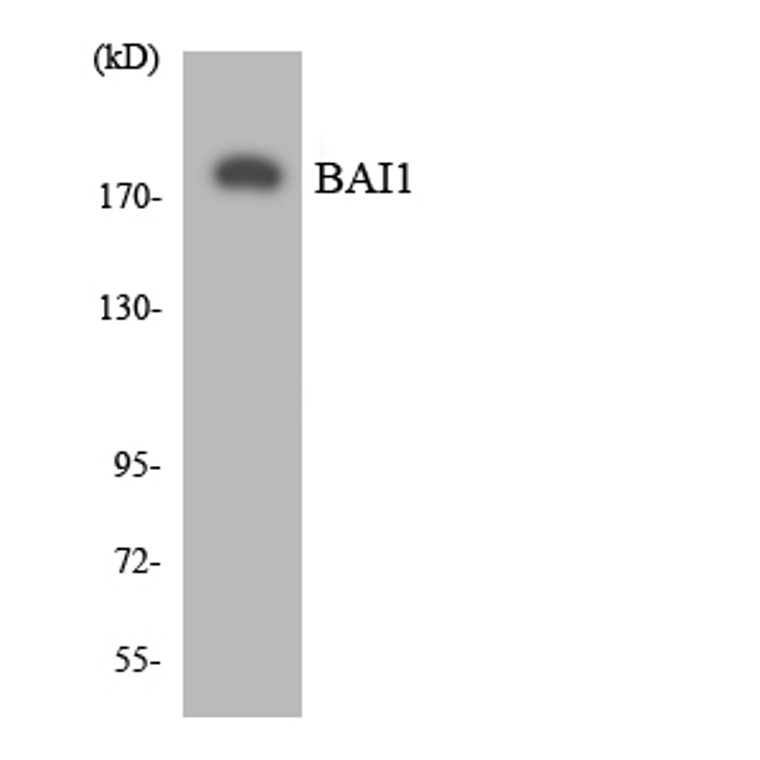| Host: |
Rabbit |
| Applications: |
WB/IHC/IF/ELISA |
| Reactivity: |
Human/Mouse |
| Note: |
STRICTLY FOR FURTHER SCIENTIFIC RESEARCH USE ONLY (RUO). MUST NOT TO BE USED IN DIAGNOSTIC OR THERAPEUTIC APPLICATIONS. |
| Short Description: |
Rabbit polyclonal antibody anti-Adhesion G protein-coupled receptor B1 (691-740 aa) is suitable for use in Western Blot, Immunohistochemistry, Immunofluorescence and ELISA research applications. |
| Clonality: |
Polyclonal |
| Conjugation: |
Unconjugated |
| Isotype: |
IgG |
| Formulation: |
Liquid in PBS containing 50% Glycerol, 0.5% BSA and 0.02% Sodium Azide. |
| Purification: |
The antibody was affinity-purified from rabbit antiserum by affinity-chromatography using epitope-specific immunogen. |
| Concentration: |
1 mg/mL |
| Dilution Range: |
WB 1:500-1:2000IHC 1:100-1:300IF 1:200-1:1000ELISA 1:10000 |
| Storage Instruction: |
Store at-20°C for up to 1 year from the date of receipt, and avoid repeat freeze-thaw cycles. |
| Gene Symbol: |
ADGRB1 |
| Gene ID: |
575 |
| Uniprot ID: |
AGRB1_HUMAN |
| Immunogen Region: |
691-740 aa |
| Specificity: |
BAI-1 Polyclonal Antibody detects endogenous levels of BAI-1 protein. |
| Immunogen: |
The antiserum was produced against synthesized peptide derived from the human BAI1 at the amino acid range 691-740 |
| Post Translational Modifications | Proteolytically cleaved to produce vasculostatin-40 and vasculostatin-120. Vasculostatin-40 is the major form and is produced through proteolytic cleavage by MMP14 between residues 321 and 329 with cleavage likely to be between Ser-326 and Leu-327. Ubiquitinated. |
| Function | Phosphatidylserine receptor which enhances the engulfment of apoptotic cells. Also mediates the binding and engulfment of Gram-negative bacteria. Stimulates production of reactive oxygen species by macrophages in response to Gram-negative bacteria, resulting in enhanced microbicidal macrophage activity. In the gastric mucosa, required for recognition and engulfment of apoptotic gastric epithelial cells. Promotes myoblast fusion. Activates the Rho pathway in a G-protein-dependent manner. Inhibits MDM2-mediated ubiquitination and degradation of DLG4/PSD95, promoting DLG4 stability and regulating synaptic plasticity. Required for the formation of dendritic spines by ensuring the correct localization of PARD3 and TIAM1. Potent inhibitor of angiogenesis in brain and may play a significant role as a mediator of the p53/TP53 signal in suppression of glioblastoma. Vasculostatin-120: Inhibits angiogenesis in a CD36-dependent manner. Vasculostatin-40: Inhibits angiogenesis. |
| Protein Name | Adhesion G Protein-Coupled Receptor B1Brain-Specific Angiogenesis Inhibitor 1 Cleaved Into - Vasculostatin-40Vstat40 - Vasculostatin-120Vstat120 |
| Cellular Localisation | Cell MembraneMulti-Pass Membrane ProteinCell ProjectionPhagocytic CupCell JunctionFocal AdhesionDendritic SpinePostsynaptic DensityVasculostatin-120: SecretedVasculostatin-40: Secreted |
| Alternative Antibody Names | Anti-Adhesion G Protein-Coupled Receptor B1 antibodyAnti-Brain-Specific Angiogenesis Inhibitor 1 Cleaved Into - Vasculostatin-40 antibodyAnti-Vstat40 - Vasculostatin-120 antibodyAnti-Vstat120 antibodyAnti-ADGRB1 antibodyAnti-BAI1 antibody |
Information sourced from Uniprot.org
12 months for antibodies. 6 months for ELISA Kits. Please see website T&Cs for further guidance










